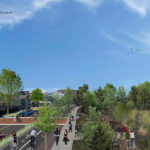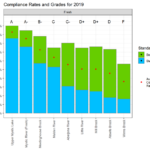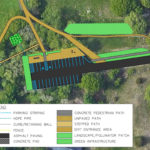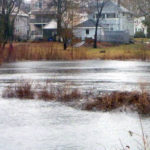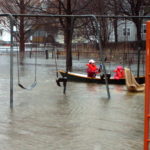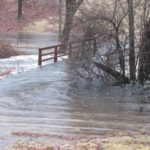
by Anne-Marie Lambert Flooding caused the collapse of the Trapelo Road culvert over Beaver Brook in 2010, and inundated the train tracks at the Waverley MBTA commuter rail station. Belmont is expected to see its share of future big intense storms, extreme heat, and other disasters from climate change. If it’s any comfort, our town now has a preparedness plan, thanks to a state-funded program. The Town of Belmont Hazard Mitigation-Municipal Vulnerability Preparedness Plan identifies local vulnerabilities to flooding, pollution, and traffic jams, and proposes mitigating actions, short-term and long-term, to help vulnerable populations safely shelter from extreme heat, rain, [READ MORE]



